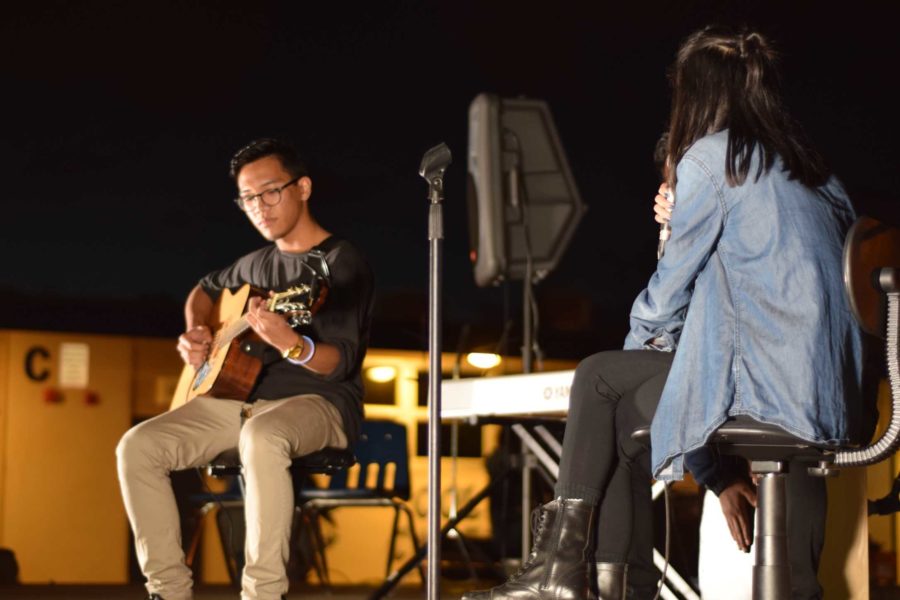Faces From Around the World
Photo provided by: Mrs. Heidi Kuehn
Cam High and German Exchange students (from left to right) Sarah Smith, Kylie Speth, Ruby Emmert, Katie Oliver, Sara Deschner, and Lea Schneider.
Students visiting from all over the globe peppered Cam High’s halls for the last few months. For three weeks, 33 Germans visited through the German American Partnership Program (GAPP) and, throughout this year, six other foreign exchange students joined the student body. Below contains a glimpse into the lives of these individuals and their experiences.
GAPP Visitors
GAPP has been going on at Cam High since 2000. This year, Cam High partnered with Reichsstadt-Gymnasium Rothenburg, a school located in Rothenburg, Germany. Students were admitted into the program after completing necessary applications and participating in various interviews with their teachers. The GAPP program matched each Cam High student in the program with a Rothenburg student. The pairs first contacted each other through Instagram in March and then continued communicated over an app called Whatsapp. In October, the Germans visited Camarillo for three weeks, staying with their American partner. In June, Cam High students will visit Germany and live with their foreign partners.
Lea Schneider
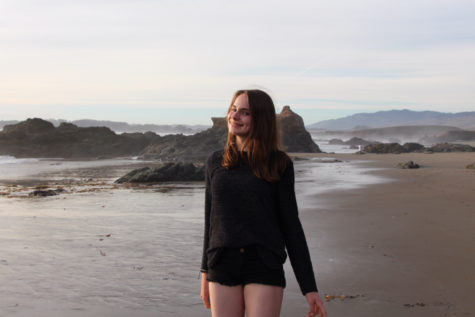
Lea Schneider, 15 years old, enjoyed creating new memories and making new friends in America.
She was motivated to join GAPP because of the new experiences it would offer her. “I wanted to join GAPP because I love to travel around the world and California is a place I definitely want to visit,” she said.
“I think there are a lot of really nice places. I really like Disneyland and California Adventure, because I think the roller coasters there are better. And [I like] the beaches,” Schneider said.
While her weeks in America will be remembered positively, they were not without plight. “At first, I was a bit shy that I make too many [speech] mistakes. Now, I make a mistake, [and] I don’t care. They will understand me,” said Schneider.
“I think school in Germany is really strict. [Students are] not allowed to use their cell phones or eat in class. And here, it’s like, it’s okay if you [use] your cellphone [in class],”she said, on the differences between German and American schools. She has decided that she prefers the freedoms that the American classroom offered.
She also found differences in food across the Atlantic, and stated that the fast food in America is better. In addition, American eating habits contrast those in Germany. “Families [in America] often eat at restaurants. In Germany we do that, but not very often,” she said.
Ruby Emmert

Ruby Emmert enjoyed her stay in America and would consider attending an American college. The 15 year old appreciated what United Sates and this experience brought to her. She especially liked the beaches. “My favorite thing was the beach day. It was the best thing; I loved it,” said Emmert.
She enjoyed Cam High’s outdoor campus. She noticed that in America, students have a greater degree of autonomy in determining their schedule. Emmert also felt that teachers in Germany conduct themselves differently than American teachers do. “I think the teachers [at Cam High] are pretty relaxed compared to ours. We have pretty strict teachers and yours [are] kind of funny, ” she said.
Emmert recognized students’ kindness and valued how they welcomed her. “The people are nicer to strangers. Like, if we have new people in our school, we don’t really talk to them, [and] we don’t invite them to do stuff,” she said. “It was nice. That’s different than Germany.”
Emmert’s experiences challenged rumors she had previously heard regarding American culture. “Some of the things we were told [about Americans] were not true,” she said. “It was good to see that it’s not [as we were told].”
She found living with a host family enlightening. “It was really good to see that other families have kind of the same problems that we have at home,” said Emmert.
Her relationship with her partner evolved over her stay. “At first, everyone was shy. Katie and I didn’t talk that much. After a few days, we were friends and it was good.”
Jonas Kersten

Jonas Kerrsten, 15, discovered multiple differences between the culture of America and Germany. He observed that America’s popular music is genre specific, and many Americans listen to hip-hop.
According to Kerrsten, food styles in America also differ from those in Germany. For example, he said, “Your popcorn is not good. It’s salty. Ours is sweet.” He missed the German food more than anything else; however, he also enjoyed some foods he had never eaten before, such as corn dogs.
German students learn many foreign languages. “I know German, English, Latin, and French. It’s normal to learn the grammar of Latin, but we don’t speak it. I’ve been learning Latin for four years,” he said.
Back home, his favorite class is physical education. In Germany, schools do not have sports teams that compete against each other, like they do in America. Instead, competitive sports teams are solely through after school programs and private organizations.
Moreover, Kerrsten found Cam High’s class sizes larger. “We have only 25 [students per class] and here you have 40 [students per class].”
Kerrsten enjoyed his stay, particularly his visits to the beach, Universal Studios, California Adventure, and Disneyland. “I will miss my partner and the weather the most,” he said. He planned to spend his last day in California with his partner learning how to surf.
Foreign Exchange Students
Michał Głowacki

Michal Głowacki, 17, is from Sopot, Poland. Sopot, a small city containing spas, shops, and restaurants, boarders the Baltic Sea and is known to the Polish as the city you go to to “chill-out,” according to Głowacki.
Sopot is also a world-renowned sailing city. Back in Poland, Glowacki is part of a sailing team. “I miss my coach and teammates everyday. [At home] I sail everyday,” he said.
In addition to his sport, Głowacki misses the cold weather that Polish winters bring and Polish food. He said, “I was surprised [to be assigned to California] because, on every test, I wrote I like cold weather.”
Głowacki traveled through the Cultural Homestead International program. The program required that applicants submit their medical history, teacher recommendations, and sit for an exam.
“I’m excited to go back,” he said. “In Europe, everything is fresh. I miss food so much.”
However, he does enjoy the entertainment and some of the food that United States provides. “I really like movies here because you have a big sofa in the cinema,” Głowacki said. “You have very good hamburgers. I think I like In-N-Out most.”
Since Głowacki’s host father is from Mexico, he has enjoyed eating Mexican food. “He makes tacos. I like them. I like spicy food,” he said.
Głowacki’s host father’s grandfather is from Poland, which he found interesting. He has established a close relationship with his host family. “I don’t feel like this is my host family. I feel like I’ve known these people all my life,” he said.
Previously, Głowacki visited America, staying in New York and Florida. Głowacki speaks Enlglish, Spanish, French, German, Russian, and Polish. He has been learning English since he was seven years old.
Despite being prepared for communication, Głowacki was not prepared for the cultural differences between Poland and America. “I think, here, when you fail something everybody says, ‘Oh, nothing happened. It’s okay.’ In Poland, nobody plays games,” he said.
He is also unaccustomed to passing periods because, in Poland, teachers switch classrooms while students remain in the same class.
By the end of this year, Głowacki expects to improve his English, and to have grown as a student and an individual. “I’m sure I will be more responsible for myself,” he said. “[I came here mostly to] learn English and learn about new cultures.”
Eleonora Carrettin
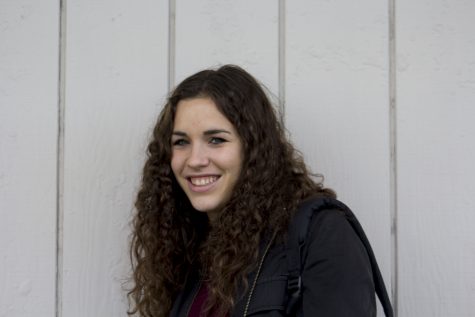
Eleanora Carrettin, age 17, from Padua, Italy, a city near Venice, came to United States through Rotary’s foreign exchange program. Her host father is a part of the Rotary club. “My host family is like the perfect family. I feel so at home when I’m with them,” she said.
Prior to this program, Carrettin was a foreign exchange student in Belgium for four months. This experience helped her feel more comfortable coming to United States. When choosing where to spend the year, foreign exchange students only pick the country. “[I chose America] because I want to improve my English and because America is America. I mean, everyone speaks about America,” she said.
“I was hoping to get Florida or California,” Carrettin said. Some of her fellow students from Italy ended up in Indiana and Alaska.
Despite having taken English classes for 12 years, Carrettin struggled with communication in the beginning. “At the beginning, it was hard because of the accent. We are used to learning British English. And, here it is different,” she said.
Carrettin enjoys her classes at Cam High. “[Government is] difficult. I don’t understand some U.S. ideas. It’s interesting to see new ideas and different things,” she said.
Her favorite teacher is Mr. Bill Tanner, who teaches her AP chemistry course. “I think he is so funny. I like the relationship you have with have teachers. In Italy, the teacher is the teacher and you are the student. You can’t speak with them. You can’t have a normal conversation,” she said.
Carrettin has tried many new foods in America. According to her, American pizza is good, but not pizza. “I love the Mexican food. I love Rolling Pin. The biscuits and gravy are disgusting,” she said. “[Americans] put eggs everywhere and eat so much peanut butter.”
Foreign exchange programs are amazing opportunities to Carrettin. “I love travel and experiencing new things and new culture with new people all over the world. It opens your mind and you can understand yourself better because you have to do everything alone” she said. “Its hard [to leave]. But, you know that you have friends all over the world. They will always be there for you.”
Ryunosuke Taura

Ryunosuke Taura, 17 years old, is from Saga, Japan. Before coming to America, he had taken three years of English. Taura hopes his English will improve by the end of the year, as university exams in Japan require English testing.
Three years ago, Taura visited United States through an exchange program. He spent one month during the summer in San Francisco, California. This trip is different since it is longer and he attends school. “In America, school has electives. I don’t have electives in Japan,” he said.
He is enrolled in Computer Aided Design (CAD), painting, video production, English, American History, and wood shop.
English class is proving to be a challenge to Taura. “I’m reading Crucible and next is Huckleberry Finn. The Old English is hard,” he said.
Prior to coming to America, Taura was unfamiliar with passing periods and changing classrooms throughout the day. Instead of lockers adorning the halls, in Japan, students each have a locker at the back of the classroom. “I am always in homeroom. I don’t move classrooms, the teachers move,” Taura said. “Japanese people call it a locker but it doesn’t have a lock, just books.”
Class roles in Japan contrast those in America. “In America, teachers and students have conversations. In Japan, only the teacher speaks,” he said. “In my opinion, American style is better. Japanese style is distant and boring.”
Additionally, he notes the relaxed atmosphere of most American classes. He said, “I like the freedom of American school. Japanese school is so strict. I can’t bring my cellphone to school [in Japan].”
In Japan, Taura has to attend class every first and third Saturday of the month. He is enjoying his break from Saturday school to relax.
There are also aspects of America he doesn’t enjoy. “I don’t like how noisy it is in the class,” he said.
In addition to the quiet environment, Taura misses Japanese food and his friends. “I’m missing food the most, my mother’s food,” he said.
His favorite teacher is Mr. Peter Wachtel, who teaches Computer aided design (CAD) and wood shop. “He talks to me. I am an exchange students so I can’t speak English well. He knows that,” Taura said.
Taura is glad he is able to participate in foreign exchange programs. “It is a good thing because it makes me independent,” he said.
Chalita Chaiyaehan
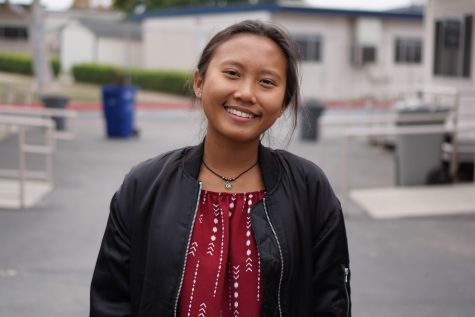
Chalita Chaiyaehan, 17 years old, came to America from Norway through EF’s (Education First) foreign exchange program. Chaiyaehan lived in Thailand until she was six years old and then moved to Norway. She speaks Thai, Norweigen, English, and French.
She has been speaking English since second grade. While her fluency was strong before coming to America, her accent has transformed. “I had more of an accent. People have been saying that I have more of an American accent, now. Everyone thinks that I’m actually from here,” she said.
Chaiyaehan discovered the foreign exchange opportunity while talking to her counselor. She saw a poster on the wall which intrigued her. “I talked to my mom and dad and they didn’t even know what it was. I had to explain what it was to them even though I didn’t really know either. I thought they were going to say ‘no’ because it costs a lot of money,” Chaiyaehan said. “I just wanted to get out of Norway because I come from a small town and there’s nothing to do. I just wanted to do something new for myself. It was kind of spontaneous.”
She wanted to come to America, in particular California. “I like Camarillo. I feel like it’s like my town. It’s quiet and safe. I like that it’s safe, but also there’s stuff to do. I know you guys don’t think so but there’s a lot to do. You guys have just been here for awhile,” she said.
Since coming to America, she has visited Las Vegas and Los Angeles which she enjoyed.
American school is very different than Norweigen school, according to Chaiyaehan. “School is just school in Norway. Here, we have the football games and different sports. [In Norway,] if you want to do sports you just have to get involved in the community,” she said.
The Southern California weather was difficult to get accustomed to. Chaiyaehan found Norweigen summers to be similar to California winters. “It’s so hot that I get tired. I got sick because it’s super cold in the morning and then it gets super hot,” she said. “Right now, it’s snowing and it’s super cold [in Norway]. When I’m snapchatting my friends, they say it’s super cold [in Norway]. I tell them, I don’t get what you’re saying because it’s 90 degrees.”
Chaiyaehan says that her friends think she is going to be different when she returns to Norway. “[H]opefully it’s going to be a good change,” she said. “I’m probably going to be more independent. I have to take care of myself a lot.”
Chaiyaehan expects that this experience will, indeed, have effects on her entire life. “It’s probably going to help for job applications. English is a very universal language,” she said.
Constanza Salas-Araya

Constanza Salas-Araya came to America from Quilpué, Chile through American Field Service’s (AFS) exchange program. The 16 year old came here unable to speak any English. “I could only say ‘hi, how are you, goodbye,'” she said. “People would have to speak so slow and I had to translate everything. I tried to answer the question but I didn’t know anything. I tried to speak more and listen to a lot of movies in English.”
She originally wanted to go to New Zealand, but that foreign exchange program was cancelled. So, she decided to pursue travelling to America. Salas-Araya said, “Here you have all the opportunities. Here you have more variety. You have more cultures. You don’t just learn about America; you learn about all these cultures.”
Salas-Araya appreciates the diversity of America. “I like learning about them and all the culture,” she said with regards to her host family.
While she has enjoyed learning about the people, it was tough for her to connect with them, at first. “Here, people are more independent. You have to approach them. In Chile, if you are new, people come and say ‘hi’ to you,” she said. Salas-Araya misses the people back in Chile.
She is taking American government, physiology, weight training, ASB, English, and math. She said, “Mr. Martin [physiology teacher] is funny.”
Since her arrival, Salas-Araya has been to China Town and San Francisco. She enjoyed walking the Golden Gate Bridge. She also likes the American style food. “The hamburger is so big and you can put a lot of things in it. I tried one that had bacon, meat, and chicken. In Chile, you only have one kind of meat and maybe a tomato. It’s so small.” When she eats Mexican food, she is reminded of her own Chilean cuisine. She said, “It’s similar, It’s a bit less spicy.”
Jonna Olasdotter

Jonna Olasdotter, 17 years old, from Västerås, Sweden. She said, “[Västerås] is a lot like Camarillo. But, we have one big city. Yours city is more spread out.”
She came to American seeking a new experience. “I was all in my Swedish bubble. I knew everything. I didn’t know much about this place.”
At Cam High, Olasdotter is taking American history, English three, cooking, weightlifting, Renaissance, and cross country. “I like [cross country]. I like to run. [In Sweden], I ran not as a sport just in my free time. I honestly don’t know if we have cross country in Sweden,” she said.
When she returns to Sweden, she will have to make-up this year. “I took a lot of electives because it doesn’t really matter.”
She said “[In Sweden], you cannot choose your subjects. Everyone has to do the same thing and it’s the same thing every year. We have what you call the block schedule.”
Olasdotter has enjoyed her stay in the states. “It’s very nice and people are friendly,” Olasdotter said. She was motivated to join the foreign exchange program (through E.F.) after watching American high school movies. “It seems like some kind of dream. It’s pretty much like the movies when the bell rings.”
Through E.F., foreign exchange students can pick where they are sent. “That costs more and I didn’t do that. I just ended up lucky anyway. I was hoping for California.”
Her parents supported this decision, but not without original apprehensions. “My dad said: that would be cool, you should do it. My mom was worried that I would be gone too long” said Olasdotter.
After taking nine years of mandatory English courses, Olasdotter was fairly prepared. However, she has improved her grammar and vocabulary. “Right now, sitting and talking to you, I’m not even nervous,” she said.
Her favorite thing about America is the weather and the school. However, she dislikes American style food. “I don’t like it. It’s so greasy. [In Sweden], we make most food from scratch. My host family buys their food prepared. I miss having food from scratch” she said.
Aisha Rahman
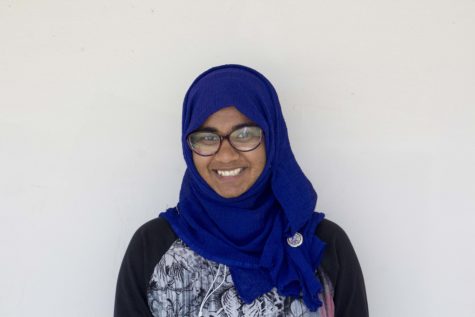
Aisha Rahman left Dhaka, Bangladesh for the first time when she came to America through the Kennedy-Lugar Youth Exchange & Study (KL-YES) foreign exchange program.
Rahman was one of 29 of 700 students selected to be in the program. Rahman participated in six qualification rounds where applicants had to write timed essays, have group and personal interviews, and take exams. “It was hard and I did my best,” said Rahman. “And it got me so far.”
Once the 29 exchange students were chosen, they went through a three-day orientation. After arriving in United States, all students met in Washington D.C. for a three-day orientation before traveling to the schools they would spend the next year at. During both of these orientations, Rahman spent time getting to know her fellow foreign exchange students. “I try to stay in contact. Most of the time it’s hard to do so because I have an extremely busy schedule,” she said.
Rahman also finds it challenging to talk to friends and family from Bangladesh. “It’s hard because we have a 14 hour time difference. I only talk to my two best friends. I don’t have time to talk to anyone else. It’s impossible” she said.
When attempting to form friendships at Cam High, Rahman discovered cultural differences between Americans and Bangladeshis. “People are more artificial. They pretend to be friendly, but they’re not […] The fakeness is pretty nice because it doesn’t hurt, but it’s worse in the long-run.”
At Cam High, Rahman has joined yearbook, drama, Save the Children club and Crafts club. With her host family, she visited Utah, Las Vegas, Los Angeles, Hollywood, and San Francisco.
Overall, she likes school in America and was even applied to California Lutheran University. Rahman said, “Here I already have work lined up. I’m working for my host family, as a nanny.” Her host-siblings are 12 year-old and nine year-old girls.
“Hopefully, I’ll come back,” she said.

Hi! I'm Rachael and I am a senior. As the news editor, I am looking forward to reporting the exciting things our student body and staff will do this...

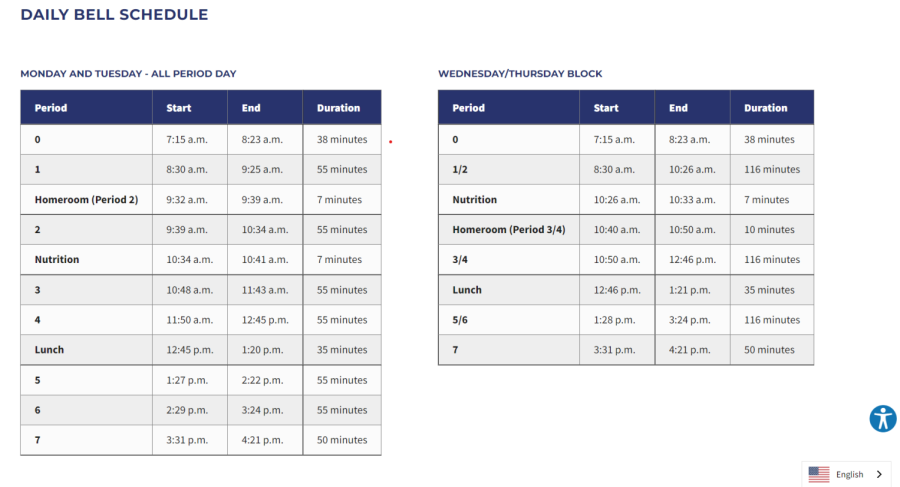
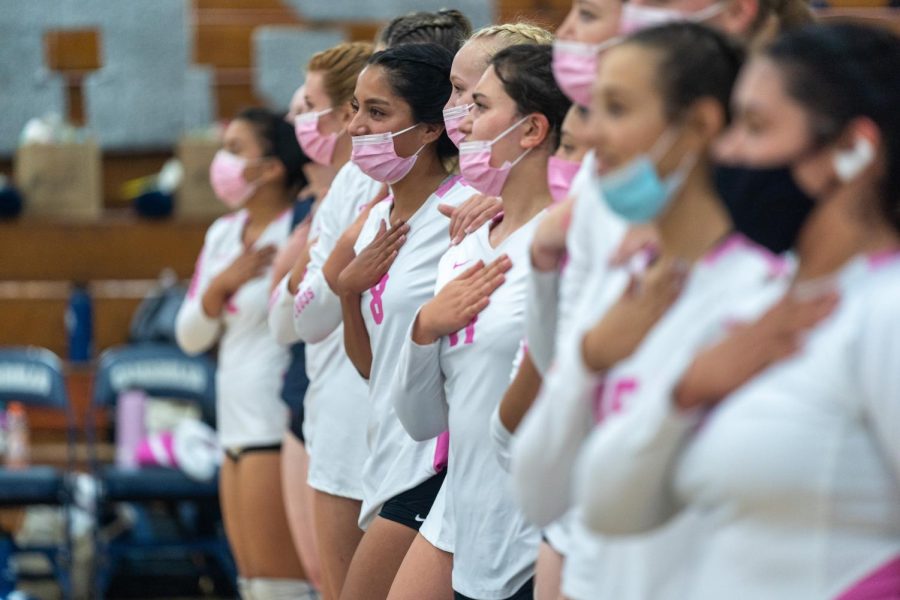
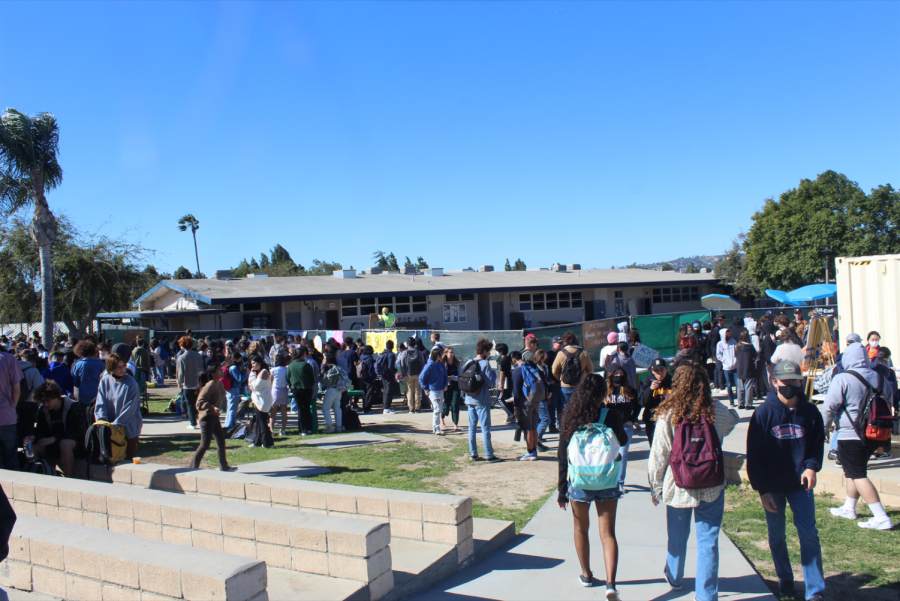















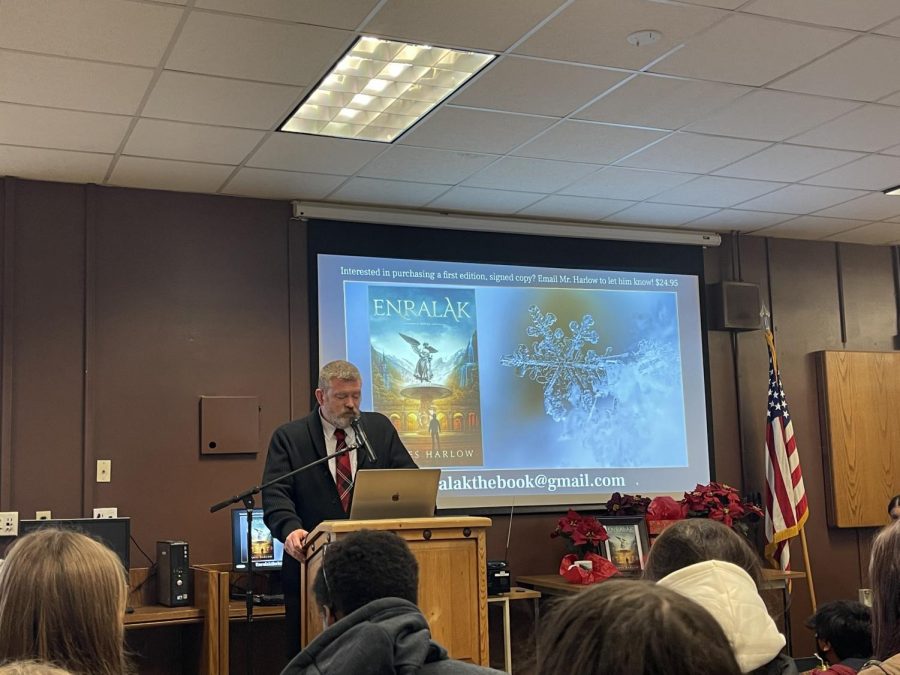
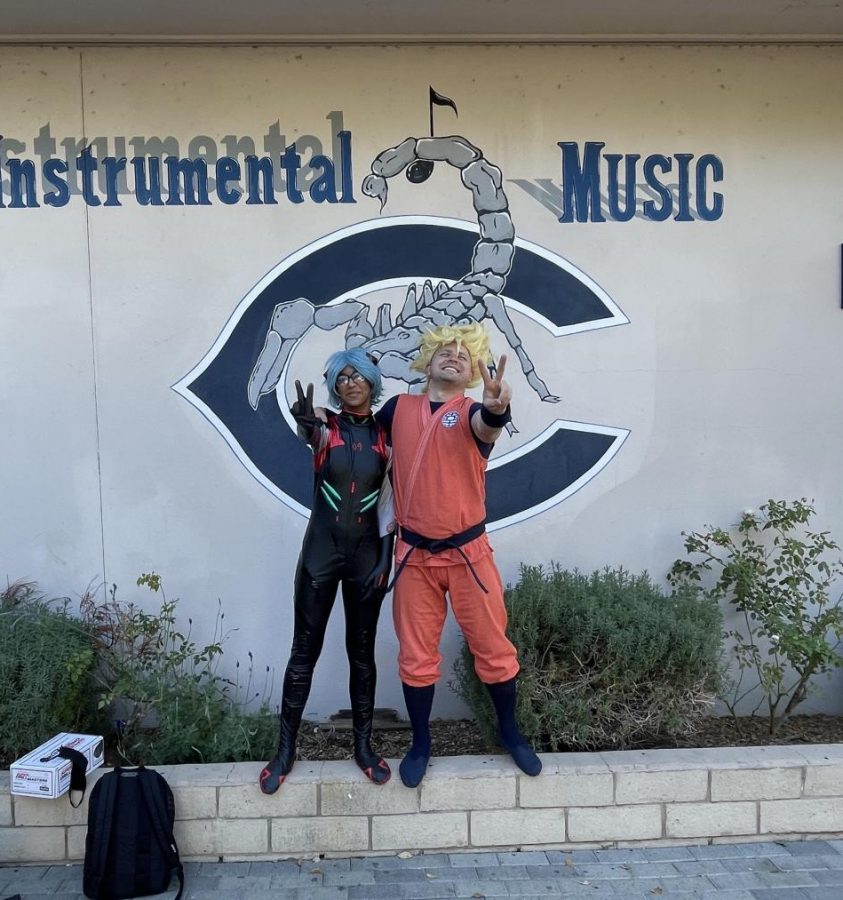

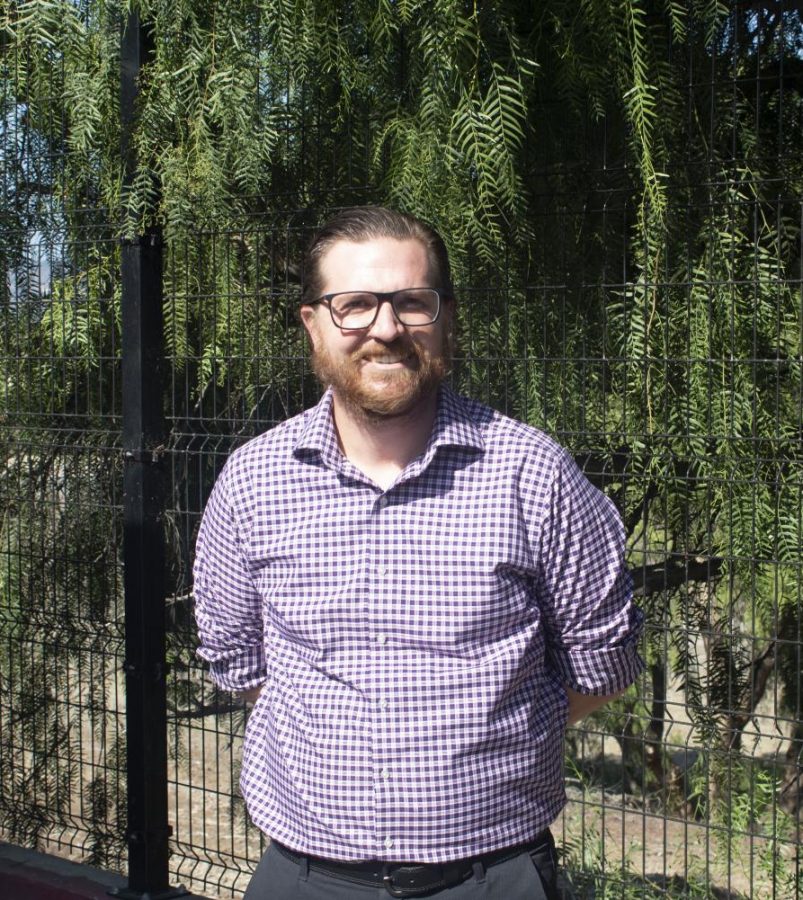

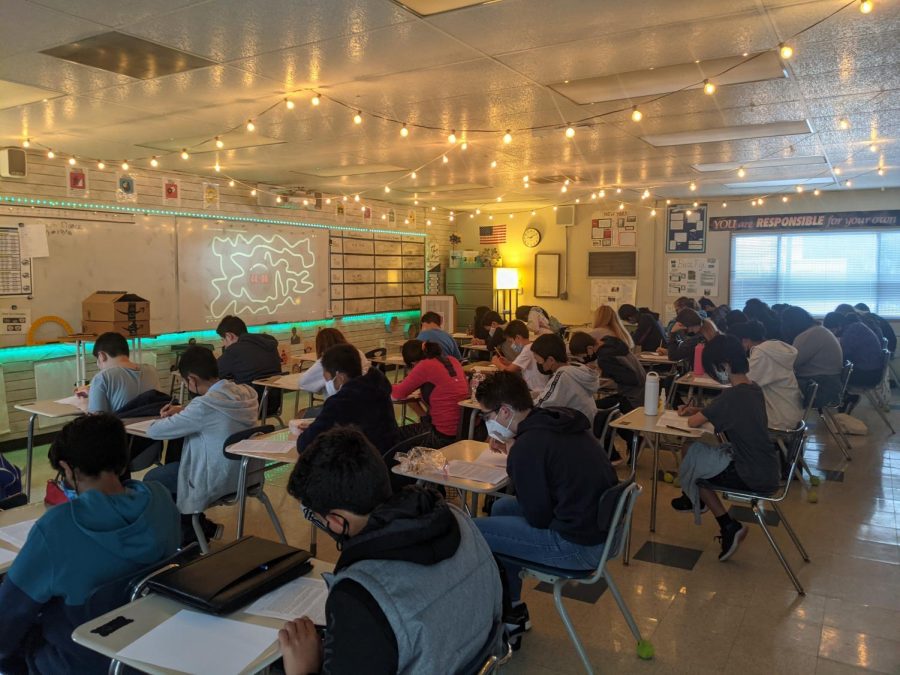








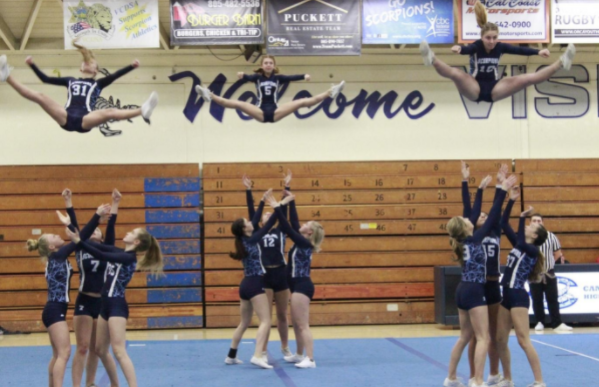


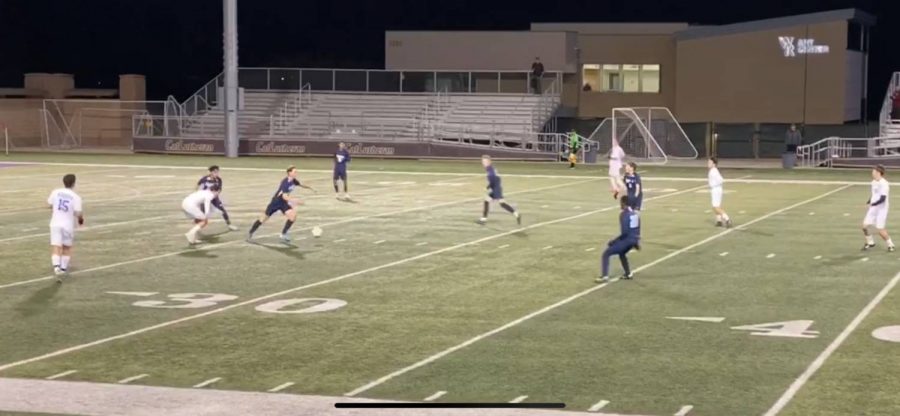

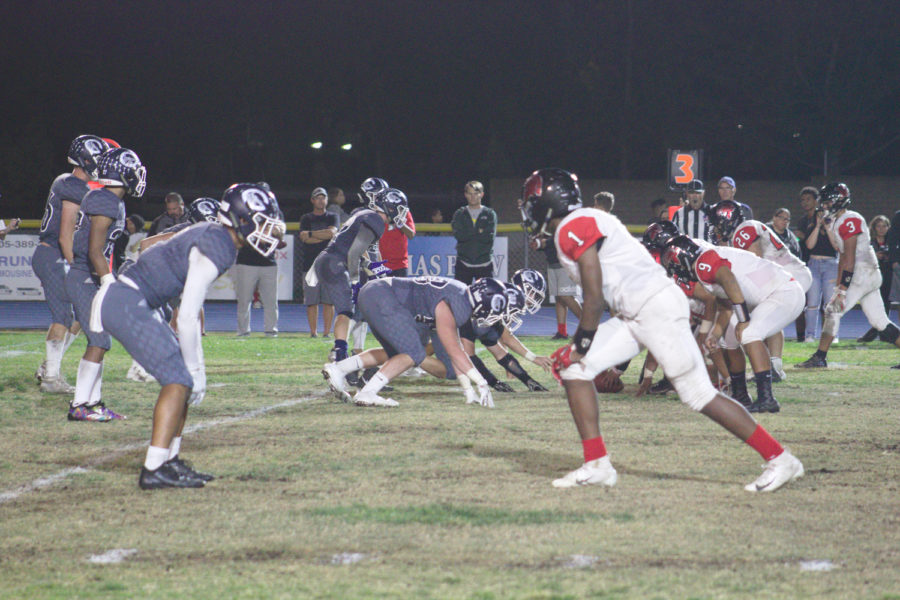







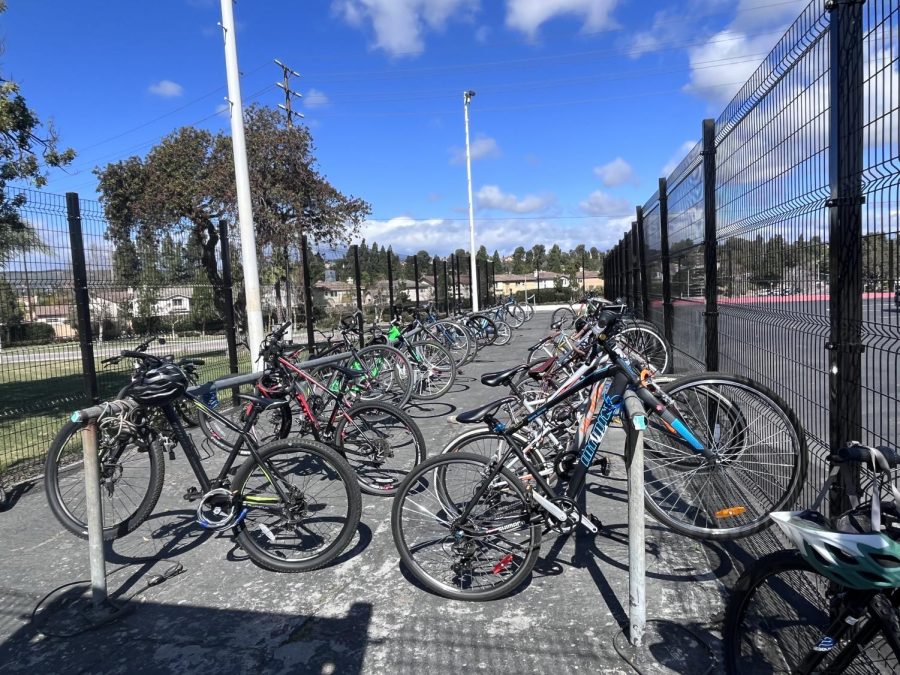
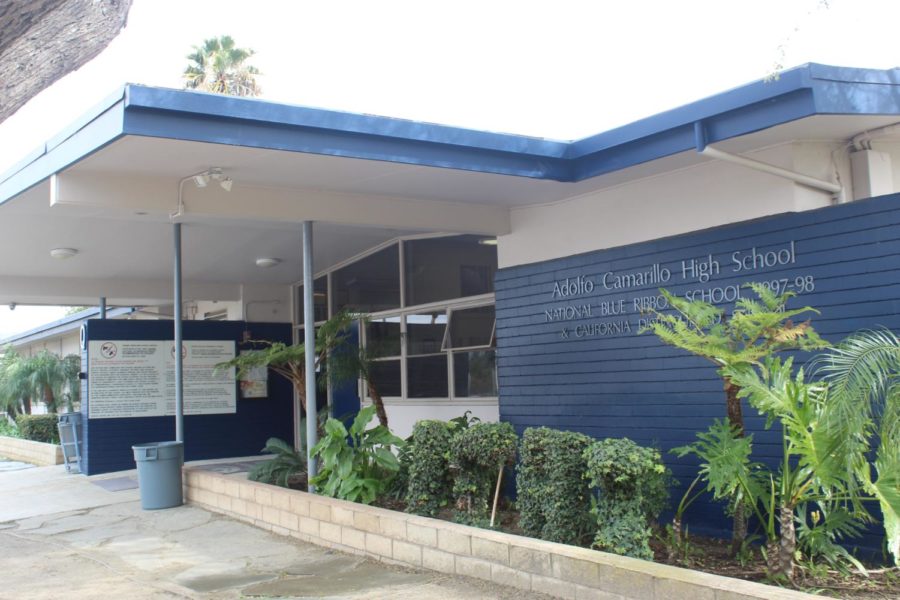


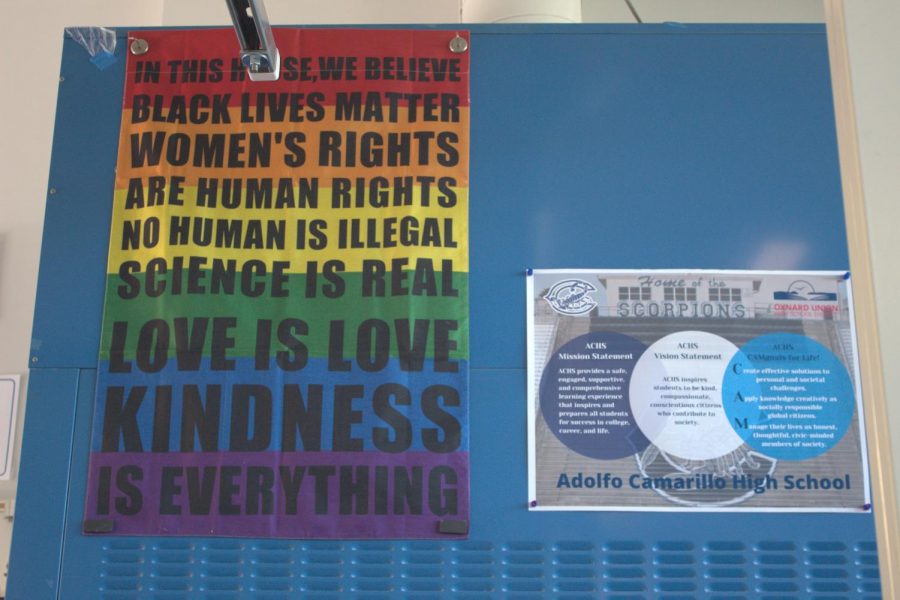












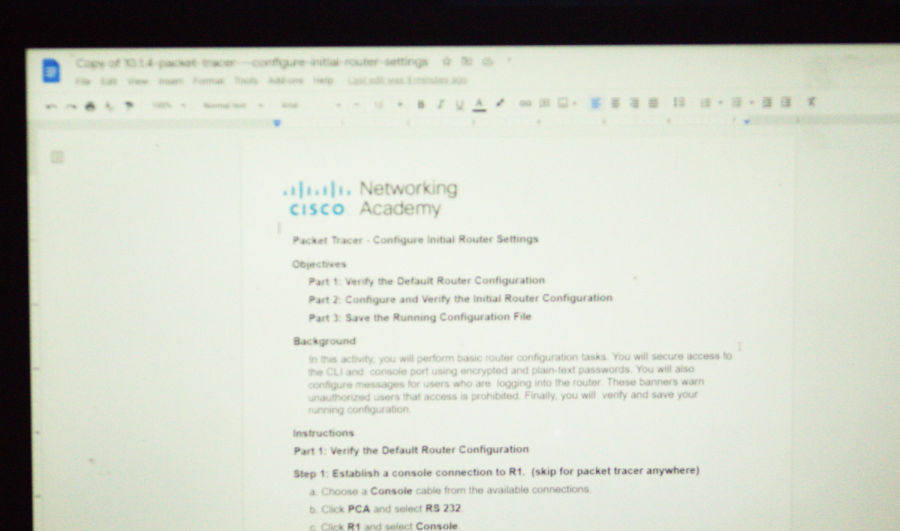



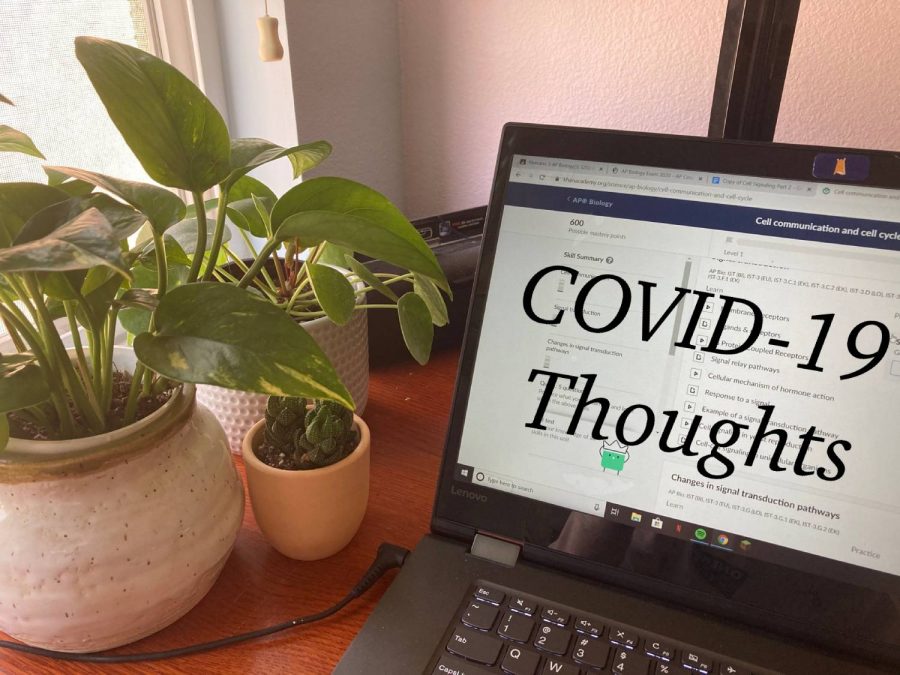

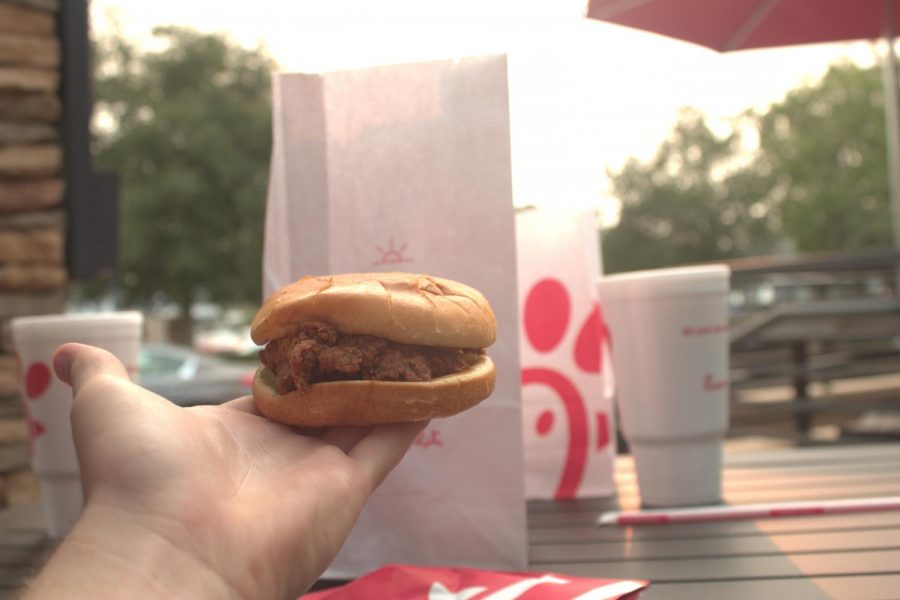



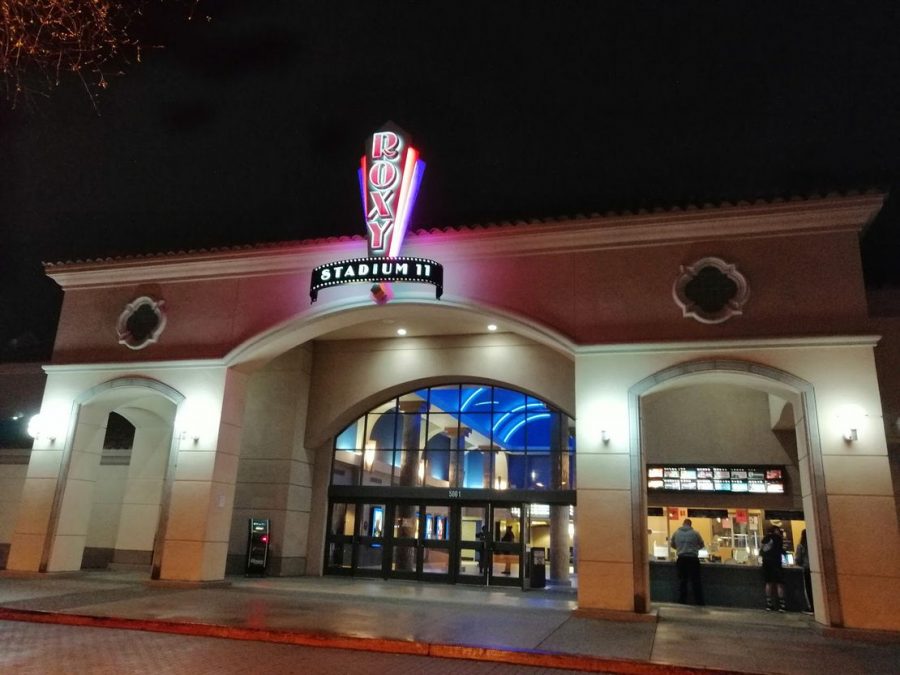







![Senior Ditch Day... Relaxation or Truancy? [Video]](https://achsstinger.com/wp-content/uploads/2017/10/IMG_7119-900x599.jpg)
![Heavy Rain Hits Cam High [video]](https://achsstinger.com/wp-content/uploads/2017/02/maxresdefault-900x506.jpg)
